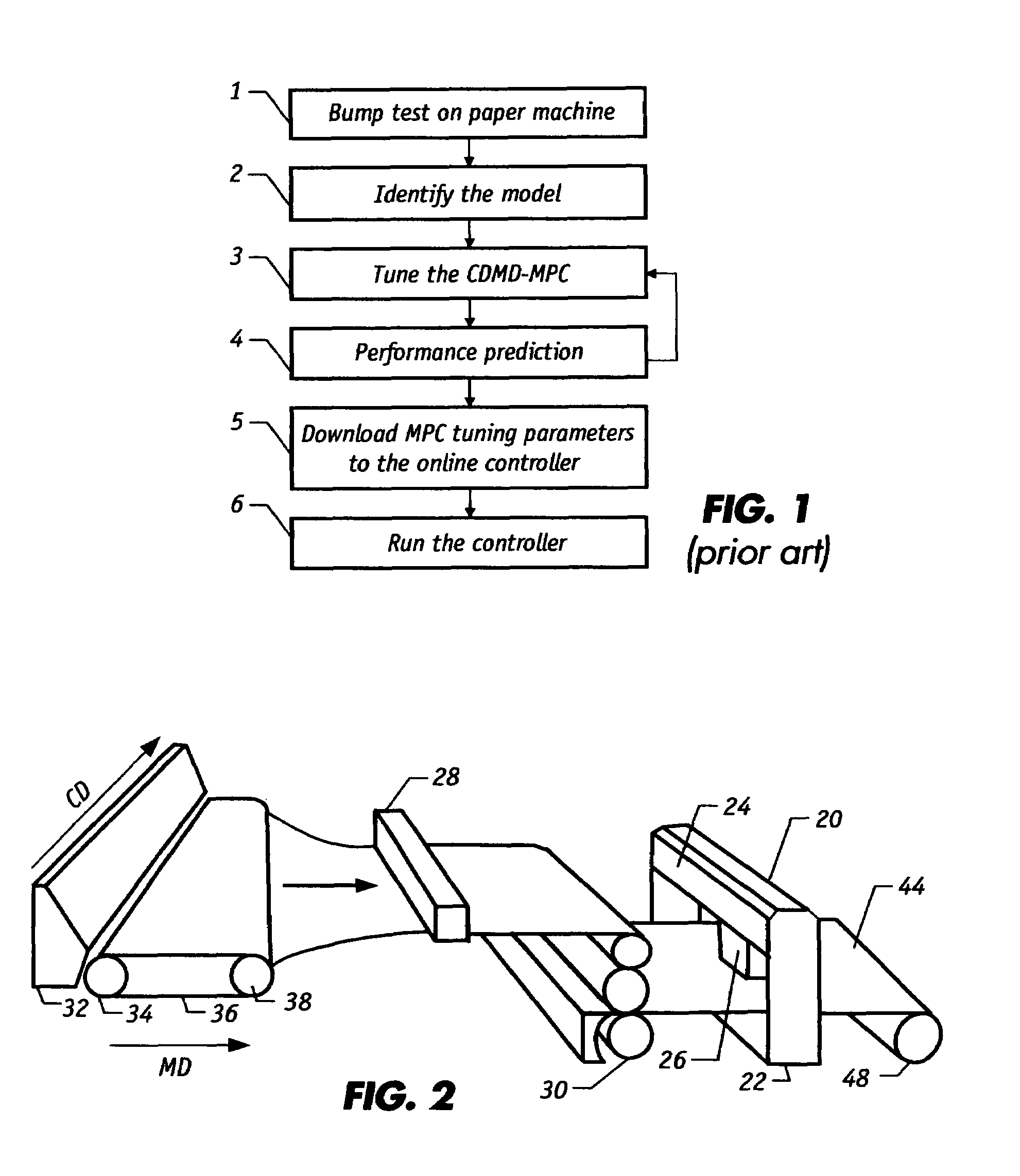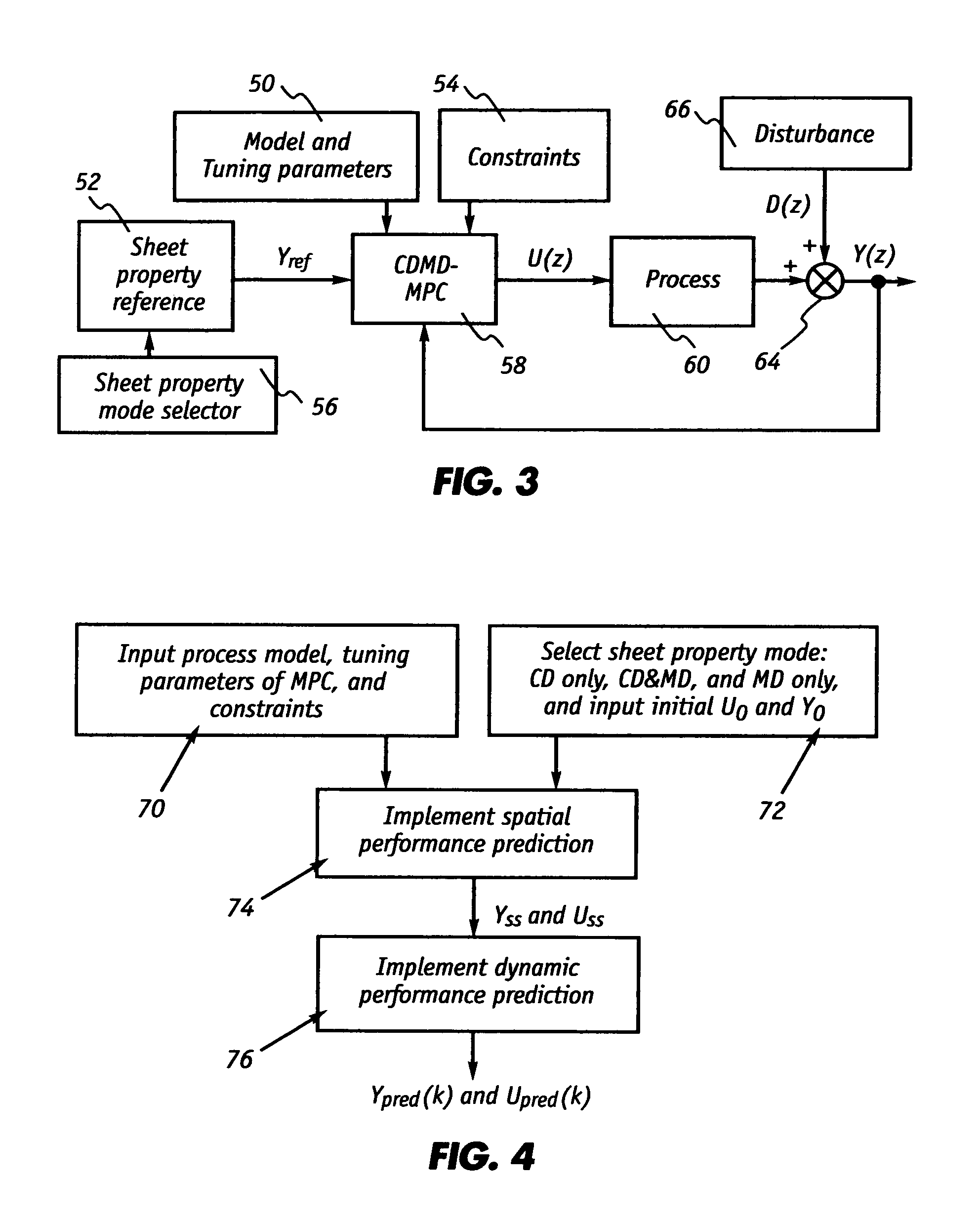Fast performance prediction of multivariable model predictive controller for paper machine cross-directional processes
a multi-variable model and predictive controller technology, applied in adaptive control, instruments, seismology for waterlogging, etc., can solve the problems of affecting the moisture profile of the slice lip, the interaction of multiple array cd processes is usually neglected in traditional cd control, and the cd control of the most well-designed single array is unfortunately ill-conditioned. , to achieve the effect of efficient solution
- Summary
- Abstract
- Description
- Claims
- Application Information
AI Technical Summary
Benefits of technology
Problems solved by technology
Method used
Image
Examples
example
[0073]The CD process in a supercalender at paper mill was used to demonstrate the effectiveness of the invention to predict the multivariable CDMD MPC's spatial and dynamic performance relative to closed-loop simulations. A supercalendering process is either an on-machine continuous process or an off-machine batch process. It is used to improve the paper sheet's surface properties, such as smoothness and gloss (shininess), which are critical for high-quality printing paper. The paper could be uncoated, one-side coated, or two-side coated.
[0074]FIG. 5 depicts an off-machine supercalender. The supercalender CD process is used as a typical multiple CD array process model to illustrate the invention. That is, like other paper machine CD processes, the supercalendering process is a two-dimensional (spatial and temporal (or dynamical)) process which starts with unwinding the paper sheet from the reel at an unwinder 110. The paper sheet is then fed between a series of rolls 112, 114, 116, ...
PUM
 Login to View More
Login to View More Abstract
Description
Claims
Application Information
 Login to View More
Login to View More - R&D
- Intellectual Property
- Life Sciences
- Materials
- Tech Scout
- Unparalleled Data Quality
- Higher Quality Content
- 60% Fewer Hallucinations
Browse by: Latest US Patents, China's latest patents, Technical Efficacy Thesaurus, Application Domain, Technology Topic, Popular Technical Reports.
© 2025 PatSnap. All rights reserved.Legal|Privacy policy|Modern Slavery Act Transparency Statement|Sitemap|About US| Contact US: help@patsnap.com



